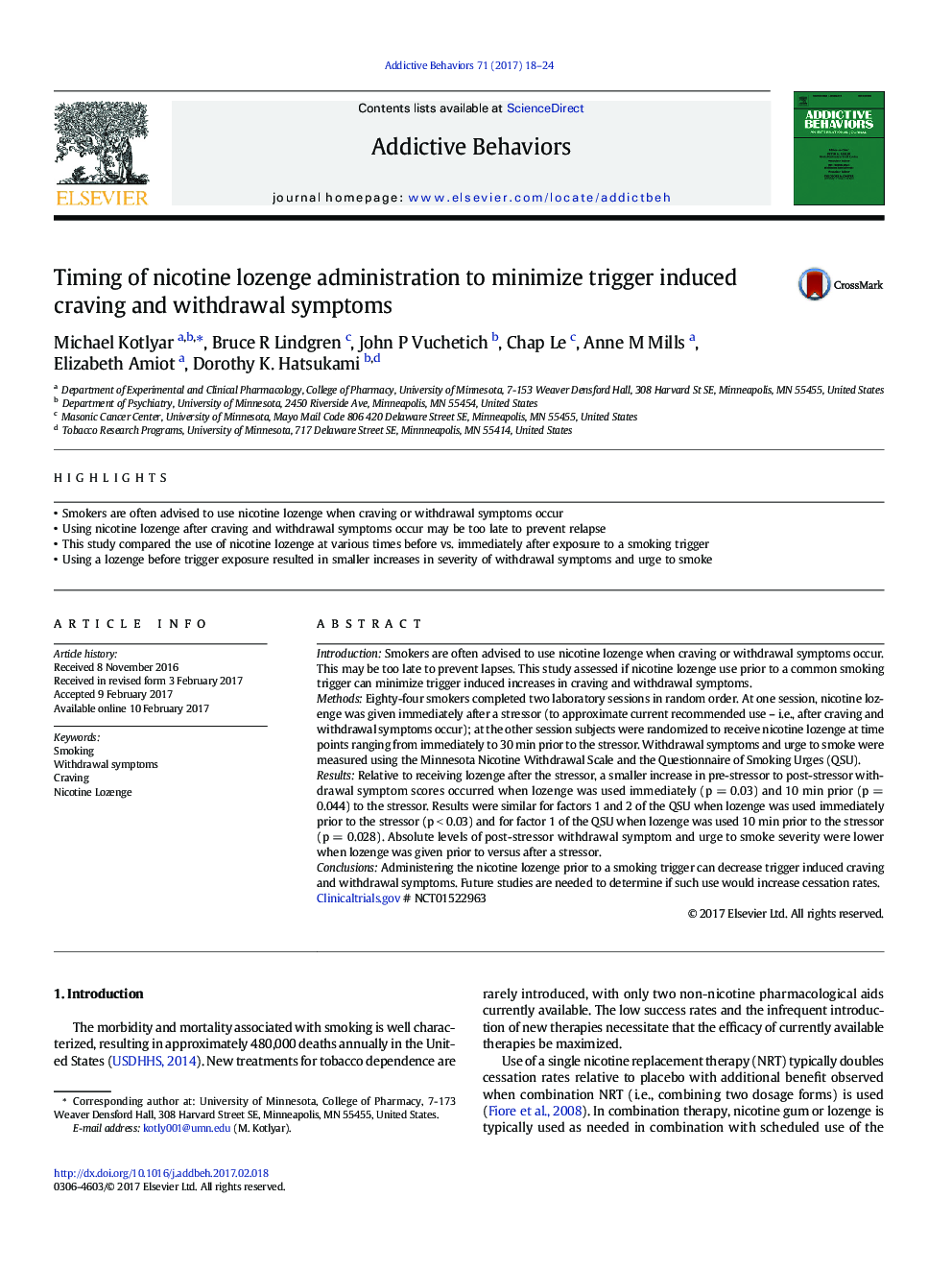| Article ID | Journal | Published Year | Pages | File Type |
|---|---|---|---|---|
| 5037787 | Addictive Behaviors | 2017 | 7 Pages |
â¢Smokers are often advised to use nicotine lozenge when craving or withdrawal symptoms occurâ¢Using nicotine lozenge after craving and withdrawal symptoms occur may be too late to prevent relapseâ¢This study compared the use of nicotine lozenge at various times before vs. immediately after exposure to a smoking triggerâ¢Using a lozenge before trigger exposure resulted in smaller increases in severity of withdrawal symptoms and urge to smoke
IntroductionSmokers are often advised to use nicotine lozenge when craving or withdrawal symptoms occur. This may be too late to prevent lapses. This study assessed if nicotine lozenge use prior to a common smoking trigger can minimize trigger induced increases in craving and withdrawal symptoms.MethodsEighty-four smokers completed two laboratory sessions in random order. At one session, nicotine lozenge was given immediately after a stressor (to approximate current recommended use - i.e., after craving and withdrawal symptoms occur); at the other session subjects were randomized to receive nicotine lozenge at time points ranging from immediately to 30 min prior to the stressor. Withdrawal symptoms and urge to smoke were measured using the Minnesota Nicotine Withdrawal Scale and the Questionnaire of Smoking Urges (QSU).ResultsRelative to receiving lozenge after the stressor, a smaller increase in pre-stressor to post-stressor withdrawal symptom scores occurred when lozenge was used immediately (p = 0.03) and 10 min prior (p = 0.044) to the stressor. Results were similar for factors 1 and 2 of the QSU when lozenge was used immediately prior to the stressor (p < 0.03) and for factor 1 of the QSU when lozenge was used 10 min prior to the stressor (p = 0.028). Absolute levels of post-stressor withdrawal symptom and urge to smoke severity were lower when lozenge was given prior to versus after a stressor.ConclusionsAdministering the nicotine lozenge prior to a smoking trigger can decrease trigger induced craving and withdrawal symptoms. Future studies are needed to determine if such use would increase cessation rates.Clinicaltrials.gov # NCT01522963
